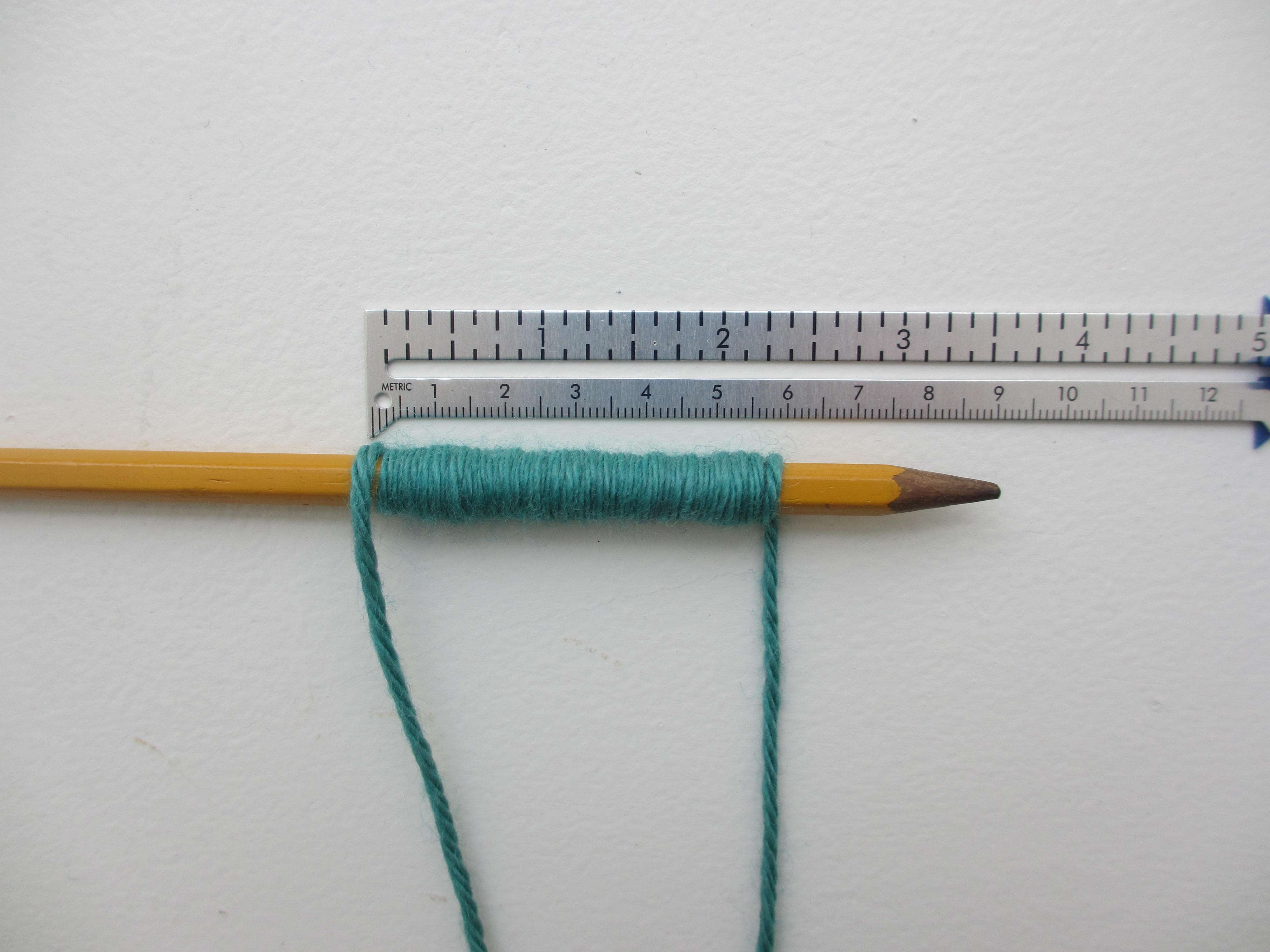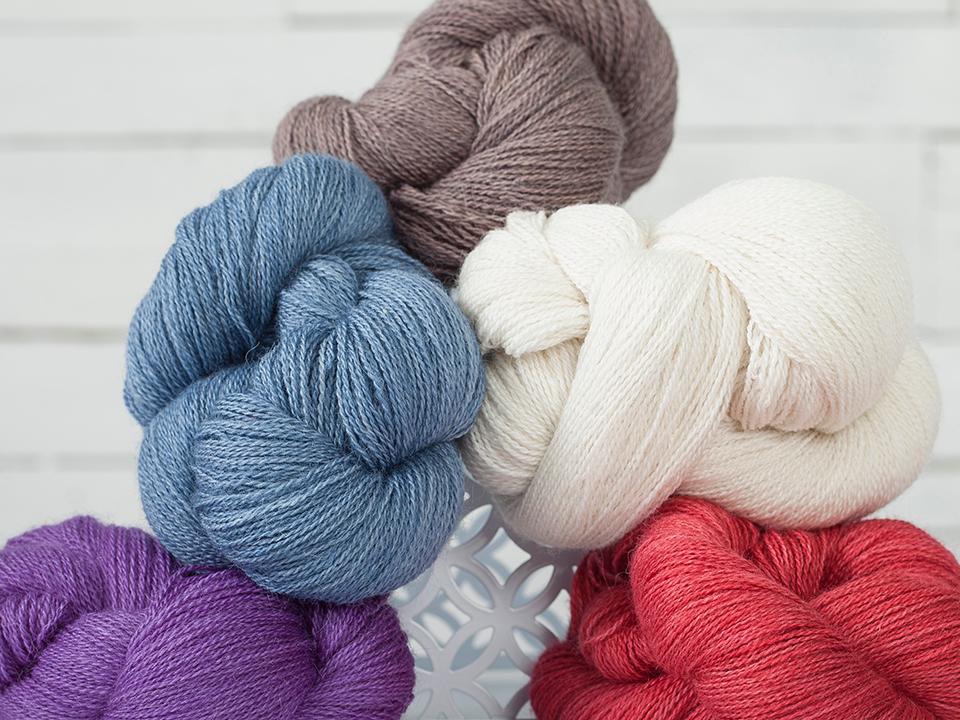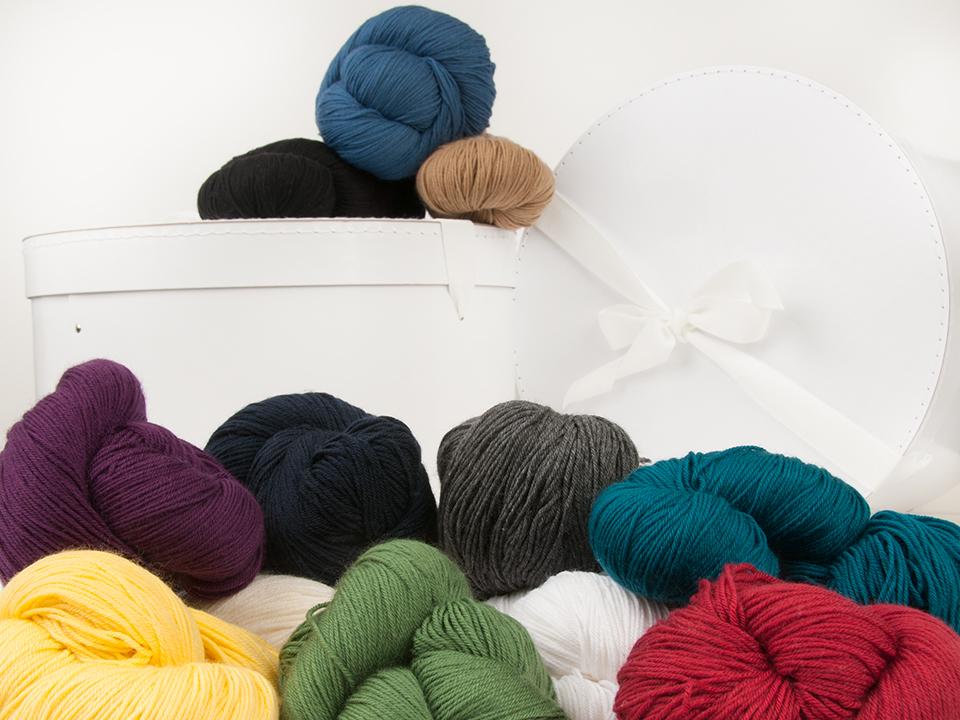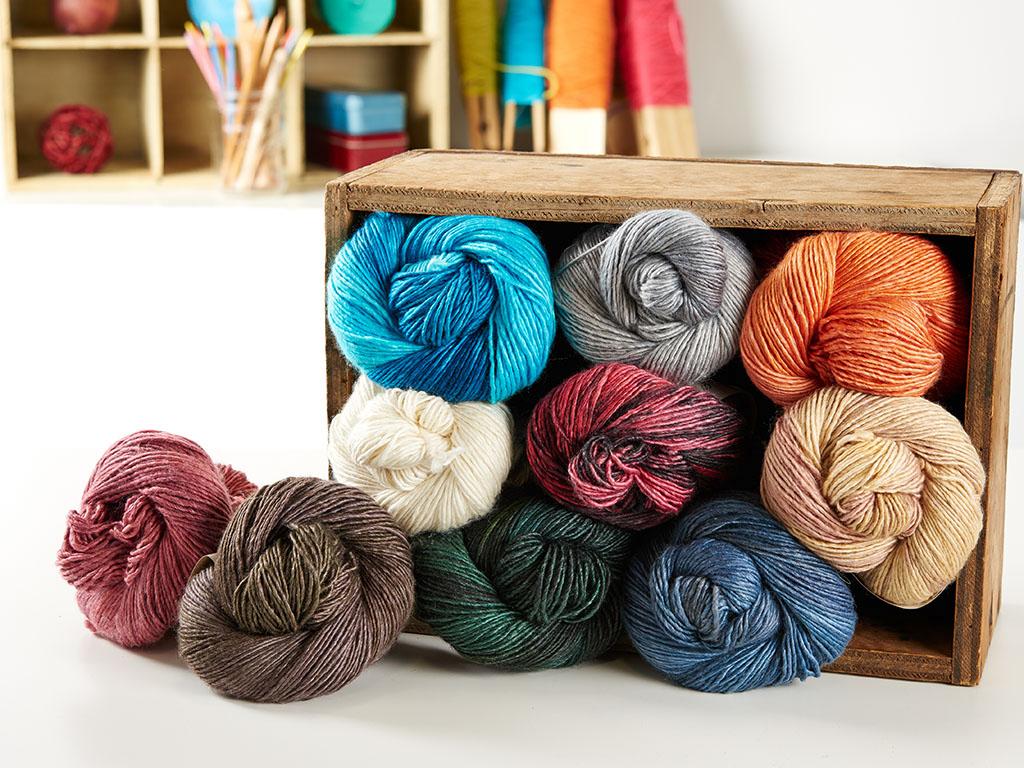It’s difficult to organize your yarn, especially if most of it has been given to you by family members cleaning out their attics. Or maybe your stash is composed of skeins you picked up from secondhand stores along with scrap yarn from old knitting or crochet projects.This post will help you determine your yarn weights.
Inheriting yarn and having a huge stash to choose from is great, especially for scrap yarn projects. But when you’re using these mystery bits and pieces for projects, you need to know the yarn weight in order to substitute the correct yarn, and often this information isn’t available on the yarn. It could be because the label is torn or yellowed — or maybe there’s no label at all.
Don’t worry. All is not lost! You can calculate the yarn weight with a handy little knitting secret called WPI (Wraps Per Inch).

What you’ll need:
- Your mystery yarn
- A ruler
- An object with a consistent circumference, such as a pencil
Note: It’s also an option to wrap your mystery yarn around a ruler, eliminating the need for an object with a consistent circumference. You can even buy a special WPI (wraps per inch) tool that has notches to hold the yarn in place while you wrap and comes with a handy card to help you categorize.
How to determine your yarn weight:
Begin by wrapping the yarn around the pencil. Don’t wrap too tightly. The goal is to get the yarn strands as close as possible without overlapping them or leaving holes. Usually wrapping about an inch should give you an accurate measurement, but if you’re using a yarn with a shape that isn’t consistent, like an eyelash yarn, you should wrap it for more than an inch to get the most accurate measurement possible.
Once you’ve wrapped your yarn, count the number of times you wrapped it around the pencil within the first inch.
WPI chart

0 – Lace Weight Yarn
WIP: < 35
< 8.5 sts/inch

1 – Fingering Weight Yarn
WPI: 19-22
7-8 sts/inch

2 – Sport Weight Yarn
WPI: 15-18
5.75-6.5 sts/inch

3 – DK Weight Yarn
WPI: 12-14
5.5-6 sts/inch

4 – Worsted Weight Yarn
WPI: 9-11
4-5 sts/inch

5 – Bulky Weight Yarn
WPI: 7-8
3-3.75 sts/inch

6 – Super-Bulky Weight Yarn
WPI: > 6
1.5-3 sts/inch
So for example, if your yarn wrapped around the pencil eight times in one inch, your yarn is bulky-weight. If the yarn wrapped around the pencil 16 times in an inch, it’s a sport weight yarn.
If you were wrapping a yarn with a funky texture as mentioned above and you wrapped extra inches, just do a little bit of math to find your WPI. If your eyelash yarn wrapped around the pencil 30 times in 2 inches, for instance, just divide 30 by 2 to find that your WPI is 15, making your eyelash yarn sport weight.
How does WPI work?
Yarn weight is determined by the diameter of a yarn strand, right? Bulky-weight yarns work up quickly because the yarn strand is thick in diameter. Lace weights are airy because their strands are thinner. Wrapping the yarn around the pencil determines whether the yarn wraps many times around the pencil, like a lighter-weight yarn would, or the yarn doesn’t wrap as many times around the pencil, like a heavier-weight yarn would.
Under Lace you have “WIP” instead of “WPI” and it also says 35 “greater than”. Same for Bulky, WPI is listed as >6 but should be <6.
Will you please explain the numbers by each yarn weight? WPI for fingering says 19-22. Is this how many times you NEED to wrap and then 7-8 st/inch is the WPI?
How nice it would be for us, the millions of readers who live in countries with the metric system, if articles, etc gave metric measurements as well as US measurements. This US-centrism really is off-putting. Sure we can convert measurements to metric, but why not just do so in your articles?
Thank you so much...very much appreciated....
Is this true for weaving thread also?
Thank you for this info. Have wondered how to this for many years.
Thank you for your very helpful information. It will make negotiating my stash so much easier. 💐
Thank you so much for this wonderful chart–most of my yarn balls don't have any tag on them that shows the size!
How can I print this wonderful chart??. I do a lot of charity knitting with various yarns donated to me. This is EXACTLY what I need to periodically refer to. TIA
Thank you for such a wonderful tip now I will be able to use all those bits and pieces